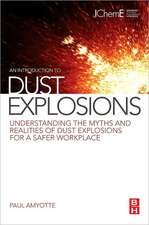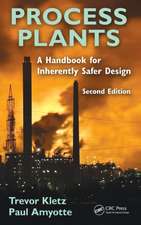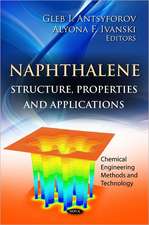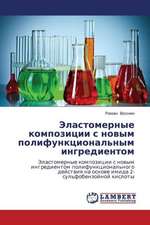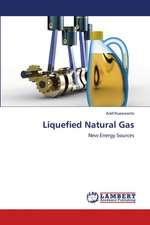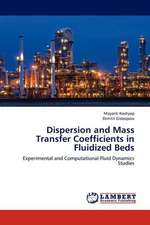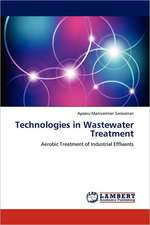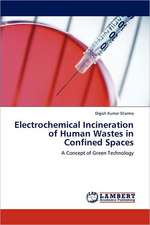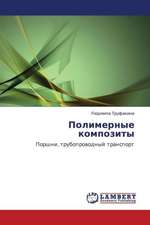What Went Wrong?: Case Histories of Process Plant Disasters and How They Could Have Been Avoided
Autor Trevor Kletz, Paul Amyotteen Limba Engleză Hardback – 6 aug 2019
- 20% new material and updating of existing content with parts A and B now combined
- Exposition of topical concepts including Natech events, process security, warning signs, and domino effects
- New case histories and lessons learned drawn from other industries and applications such as laboratories, pilot plants, bioprocess plants, and electronics manufacturing facilities
Preț: 599.29 lei
Preț vechi: 730.84 lei
-18% Nou
Puncte Express: 899
Preț estimativ în valută:
114.71€ • 124.64$ • 96.42£
114.71€ • 124.64$ • 96.42£
Carte disponibilă
Livrare economică 01-15 aprilie
Livrare express 15-21 martie pentru 65.75 lei
Preluare comenzi: 021 569.72.76
Specificații
ISBN-13: 9780128105399
ISBN-10: 0128105399
Pagini: 840
Dimensiuni: 152 x 229 x 50 mm
Greutate: 1.43 kg
Ediția:6
Editura: ELSEVIER SCIENCE
ISBN-10: 0128105399
Pagini: 840
Dimensiuni: 152 x 229 x 50 mm
Greutate: 1.43 kg
Ediția:6
Editura: ELSEVIER SCIENCE
Public țintă
Safety and loss prevention engineers and managers, process and plant designers, in all chemical, petroleum and process industry sectors.Cuprins
INTRODUCTION
1. Case Histories and Their Use in Enhancing Process Safety Knowledge
2. Bhopal
3. Opportunities for Reflection
MAINTENANCE AND OPERATIONS
4. Maintenance: Preparation and Performance
5. Operating Methods
6. Entry to Vessels and Other Confined Spaces
7. Accidents Said to Be Due to Human Error
8. Labeling
9. Testing of Trips and Other Protective Systems
10. Opportunities for Reflection
EQUIPMENT AND MATERIALS OF CONSTRUCTION
11. Storage Tanks
12. Stacks
13. Pipes and Vessels
14. Tank Trucks and Tank Cars
15. Other Equipment
16. Materials of Construction
17. Opportunities for Reflection
HAZARDS AND LOSS OF CONTAINMENT
18. Leaks
19. Liquefied Flammable Gases
20. Hazards of Common Materials
21. Static Electricity
22. Reactions – Planned and Unplanned
23. Explosions
24. Opportunities for Reflection
KNOWLEDGE AND COMMUNICATION
26. Poor Communication
27. Accidents in Other Industries
28. Accident Investigation – Missed Opportunities
29. Opportunities for Reflection
DESIGN AND MODIFICATIONS
30. Inherently Safer Design
31. Changing Procedures Instead of Designs
32. Both Design and Operations Could Have Been Better
33. Modifications: Changes to Equipment and Processes
34. Modifications: Changes in Organization
35. Reverse Flow, Other Unforeseen Deviations, and Hazop
36. Control
37. Opportunities for Reflection
CONCLUSION
38. An Accident That May Have Affected the Future of Process Safety
39. An Accident That Did Not Occur
40. Summary of Lessons Learned
APPENDICES
1. Relative Frequencies of Incidents
2. Why Should We Publish Accident Reports?
3. Some Tips for Accident Investigators
4. Recommended Reading
5. Afterthoughts
1. Case Histories and Their Use in Enhancing Process Safety Knowledge
2. Bhopal
3. Opportunities for Reflection
MAINTENANCE AND OPERATIONS
4. Maintenance: Preparation and Performance
5. Operating Methods
6. Entry to Vessels and Other Confined Spaces
7. Accidents Said to Be Due to Human Error
8. Labeling
9. Testing of Trips and Other Protective Systems
10. Opportunities for Reflection
EQUIPMENT AND MATERIALS OF CONSTRUCTION
11. Storage Tanks
12. Stacks
13. Pipes and Vessels
14. Tank Trucks and Tank Cars
15. Other Equipment
16. Materials of Construction
17. Opportunities for Reflection
HAZARDS AND LOSS OF CONTAINMENT
18. Leaks
19. Liquefied Flammable Gases
20. Hazards of Common Materials
21. Static Electricity
22. Reactions – Planned and Unplanned
23. Explosions
24. Opportunities for Reflection
KNOWLEDGE AND COMMUNICATION
26. Poor Communication
27. Accidents in Other Industries
28. Accident Investigation – Missed Opportunities
29. Opportunities for Reflection
DESIGN AND MODIFICATIONS
30. Inherently Safer Design
31. Changing Procedures Instead of Designs
32. Both Design and Operations Could Have Been Better
33. Modifications: Changes to Equipment and Processes
34. Modifications: Changes in Organization
35. Reverse Flow, Other Unforeseen Deviations, and Hazop
36. Control
37. Opportunities for Reflection
CONCLUSION
38. An Accident That May Have Affected the Future of Process Safety
39. An Accident That Did Not Occur
40. Summary of Lessons Learned
APPENDICES
1. Relative Frequencies of Incidents
2. Why Should We Publish Accident Reports?
3. Some Tips for Accident Investigators
4. Recommended Reading
5. Afterthoughts


